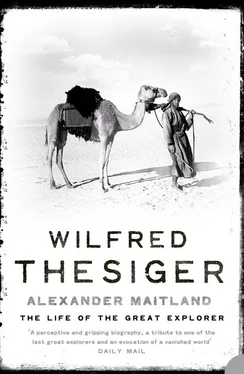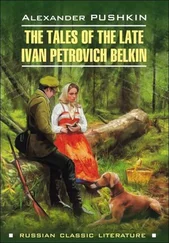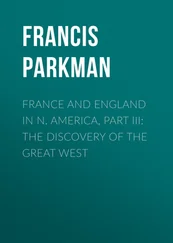In The Life of My Choice Thesiger sketched his Vigors grandparents briefly: ‘My maternal grandmother was an undemonstrative and rather prudish woman, whereas my grandfather was rather a rake, a confirmed gambler and obviously excellent company. My mother remembered him with affection all her life.’ 36Thesiger later explained that he described Thomas Vigors, his grandfather, mainly from Kathleen’s reminiscences. He recalled: ‘When I was a boy, my Vigors grandmother seemed to me a formidable, rather frightening figure. I think, in fact, she was very attached to my mother. They got on well and Granny [Vigors] was always kind to us.’ 37
Kathleen’s father, Thomas Mercer Cliffe Vigors, was born in 1853 at Perth in Western Australia. Her mother, Mary Louisa Helen Handcock, was the elder daughter of Colonel the Honourable Robert French Handcock, a younger son of Lord Castlemaine of Moydrum Castle, County Westmeath. Thomas Vigors married Mary Louisa Handcock on 4 April 1877 at St Stephen’s church in Dublin. He inherited the Burgage estate in County Carlow when his bachelor uncle John Cliffe Vigors died in 1881. Kathleen, her sister Eileen Edmée and their brothers Edward and Ludlow Ashmead were brought up at Burgage until their parents separated about 1888. The comfortable Georgian house, with ivy-covered walls surrounded by large gardens, fields and woods, gave them a childhood as idyllic as Wilfred Thesiger’s early years at Addis Ababa. By coincidence Kathleen’s upbringing at Burgage ended when she was eight, the same age Thesiger would be when, to his dismay, he found that ‘we were leaving Abyssinia for good, that we should not be coming back’. 38
The difference was that Thesiger’s father and mother were happily married, whereas Kathleen’s parents had been hopelessly incompatible. The strained relationship between Thomas and Mary Louisa deteriorated until a separation became inevitable. When Mary Louisa found Thomas in bed with one of the housemaids, he excused himself laconically: ‘If one is going to appreciate Chateau Lafitte, my dear, one must occasionally have a glass of vin ordinaire .’ 39Taking her children with her, Kathleen’s mother went to live in England. She divided her time between Roe Green House at Hatfield in Hertfordshire, and the Vigors’s London flat, 18 Buckingham Palace Mansions, where Thesiger and his brother Brian stayed occasionally as schoolboys. Kathleen, Eileen, Edward and Ashmead had been born in London. They continued to visit their relatives in Ireland, including their father, who died in January 1908, the year before Kathleen’s wedding.
We do not know how or when Thesiger’s parents first met; but they were already corresponding, rather formally, by the time Wilfred Gilbert arrived at Boma, in the Belgian Congo, in December 1907. For some reason Thesiger avoided this subject, although in private he would discuss, quite openly, other more sensitive aspects of his life. Being so close to her eldest son, it seems inconceivable that Kathleen did not tell him anything about her courtship with his father. He could have written much more than he did about his parents (and, indeed, about himself) in The Life of My Choice. But instead he devoted many of its pages to less personally revealing themes, such as Abyssinian history, in a book that his publisher’s editor described as ‘magnificent, yet strangely impermeable’. 40Wilfred Thesiger had often been described as ‘enigmatic’. His autobiography merely confirmed this, and at the same time encouraged readers to speculate about the undisclosed details of his private life.
On 2 November 1909 Thesiger’s father and mother arrived at Jibuti on the coast of French Somaliland, after a week’s voyage from Marseilles aboard the Messageries Maritimes steamer Tonkin. 1From Jibuti they travelled by train to Dire Dawa in eastern Abyssinia, and onwards to Addis Ababa by mule caravan across the Chercher mountains. They were accompanied by Captain Thesiger’s manservant Collins, his faithful batman in the Imperial Yeomanry, and Susannah, an Indian nursemaid from Zanzibar. At Dire Dawa the task of checking and distributing the vast quantities of baggage occupied the Thesigers for several days. ‘They had brought all that they would require in Abyssinia: provisions, clothes, books, pictures, furniture, tents, saddlery. There were scores of boxes and crates, all to be checked and loaded before they left Dire Dawa.’ 2In The Life of My Choice , Thesiger recalled how his mother told him that ‘the only thing that dismayed her was sorting out their incredible mass of luggage, making sure things went by the right route and that nothing was left behind. The heavier loads were being sent to Addis Ababa on camels by the desert route, where the Danakil, always dangerous, were said to be giving more trouble than usual.’ 3
Thesiger did not mention that, as well as several crates having gone missing, the trunk containing his mother’s wedding trousseau had been broken open and looted on the way from Jibuti. Exasperated and indignant, Captain Thesiger commented: ‘the railway can hardly back out of the responsibility. What on earth a Somali can do with ladies’ lace trimmed underclothes is a wonder, but it was probably looting for looting’s sake.’ 4
The journey across the mountains took twenty-nine days, including a brief official visit paid by Captain Thesiger to the legendary walled city of Harar. To her lifelong regret Kathleen felt too exhausted by the two-thousand-foot climb from Dire Dawa to the Harar plateau to accompany him. Harar seemed unchanged since the Victorian traveller Richard Francis Burton saw it in 1855 and described it in his book First Footsteps in East Africa. When the younger Wilfred Thesiger visited Harar in December 1930, he imagined that even then, ‘except for a few corrugated iron roofs, it still looked the same as when [Burton] had been there’. 5
Neither Thesiger nor his father mentioned Harar’s links with the French poet, and gun-runner, Arthur Rimbaud, who lived at Harar and was photographed in 1883 in the garden of its first Egyptian Governor, Raouf Pasha’s, residence. Thesiger said: ‘I knew who Rimbaud was, I suppose, but I knew nothing of his poetry or what he did in Abyssinia. The one that interested me was [the French traveller Henri] de Monfreid. When I was twenty-three I read his book about pearl-diving in the Red Sea and, for a while, I longed for the same sort of adventurous life.’ 6
Wilfred Gilbert Thesiger’s visit to Harar had been officially requested by the Governor, Dedjazmatch Balcha. A favourite of Menelik, Balcha ‘had a well-merited reputation for ruthlessness, brutality and avarice, and was hated and feared by his subjects’. 7Thesiger’s father was met by Balcha and some hundreds of soldiers with green, yellow and red banners and chiefs in silver-gilt crowns, red and blue robes and lion- and leopard-skin capes, armed with rifles, spears and shields. Wilfred Gilbert wrote: ‘It was very picturesque, the brown rough stones of the town and crumbling loopholed gateway and…narrow streets where only two mules could walk abreast…The palace was a whitewashed building, European of a bad style with quaint lions in plaster on the roof…Afterwards I walked round the bazaars and narrow street market, thronged with wild, white-clothed Abyssinians, Gallas and Somalis…The only thing one could compare it with are descriptions of the old Aztecs. Gorgeous barbarity such as one could nowadays meet with nowhere but here.’ 8
Describing their marches from Harar along the top of the Chercher mountains, Wilfred Gilbert wrote: ‘We are having a splendid journey and Kathleen is better than I have ever seen her.’ 9He thought she looked ‘very smart and neat in her khaki astride costume and helmet’, and the scenery ‘beautiful’ with ‘thick forests of enormous juniper and wild olive trees full of mountain clematis, jessamine, briar roses and other unknown flowers…and looking for all the world like Switzerland or Norway’. 10Kathleen observed impatiently: ‘I do not think we needed to spend so long on the journey but we were accompanied by the Legation doctor [Wakeman]…a half-caste Indian [who]…liked to take life leisurely.’ 11
Читать дальше












